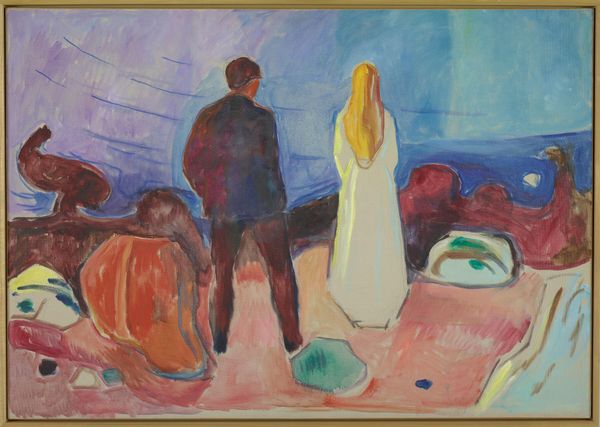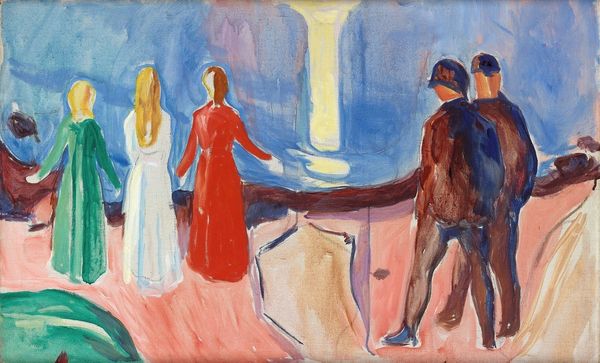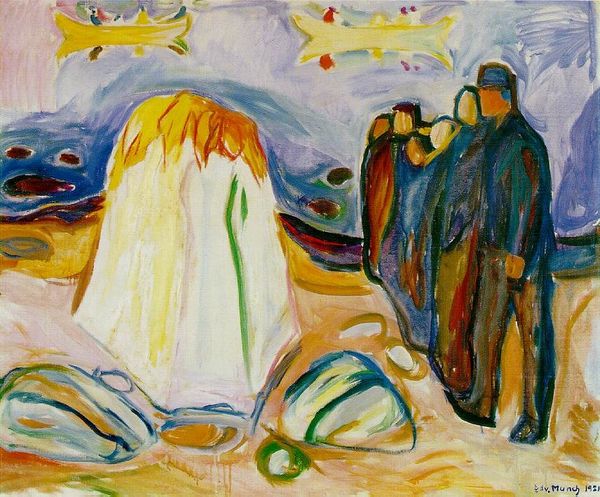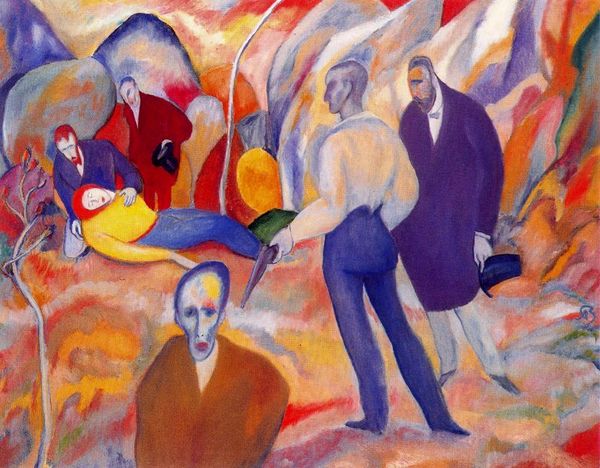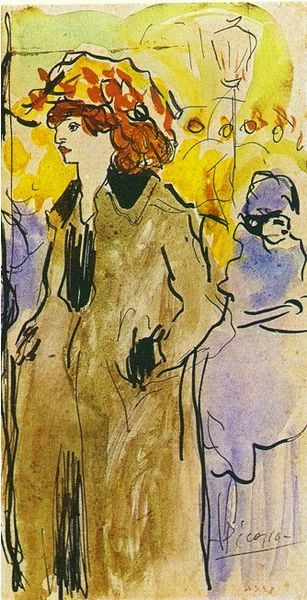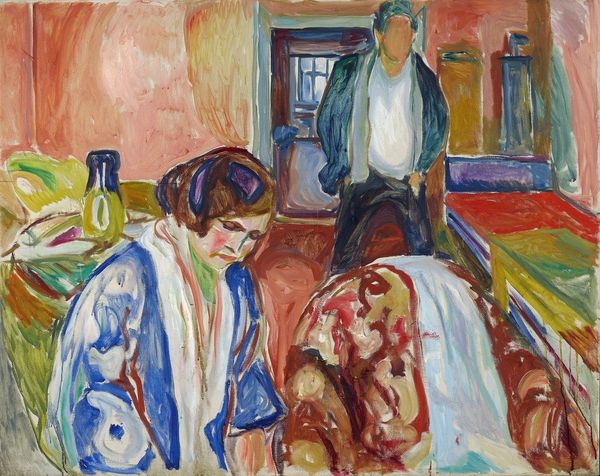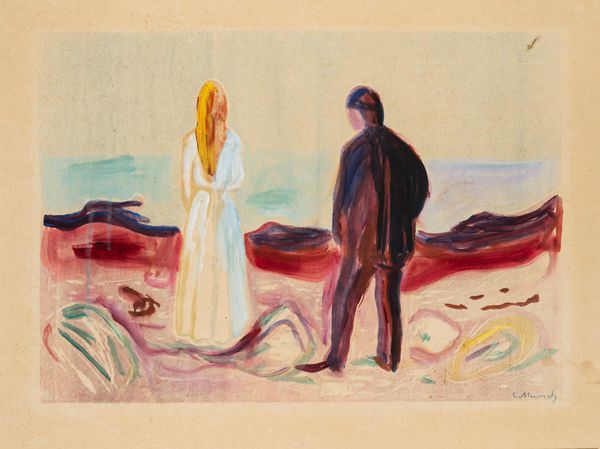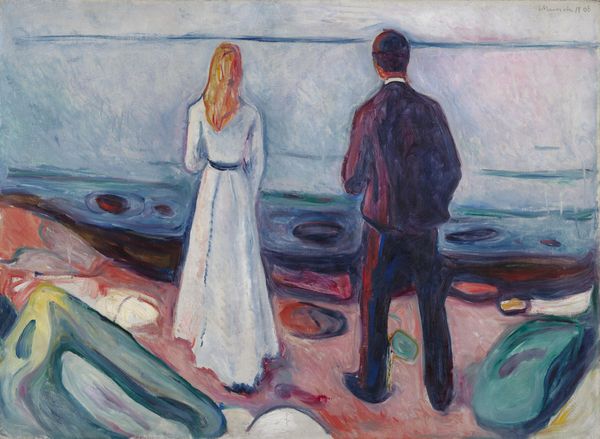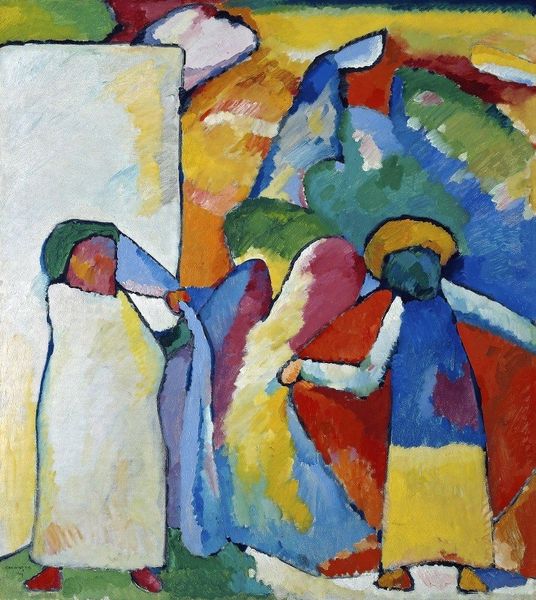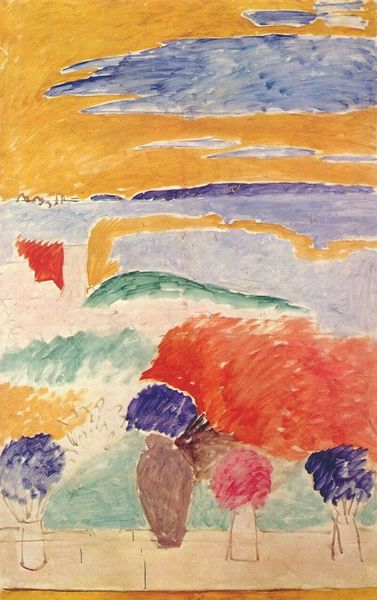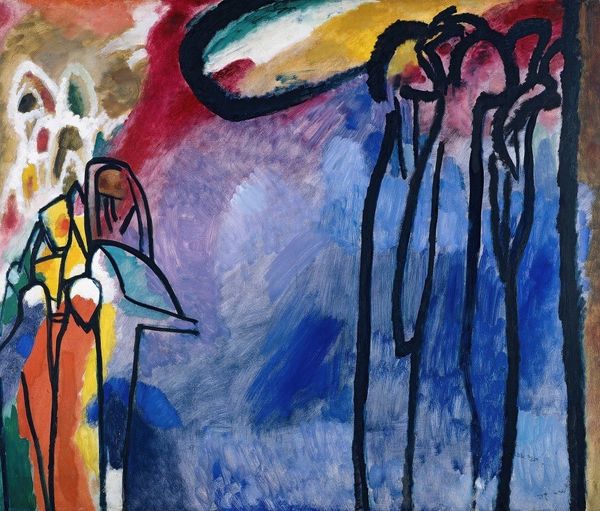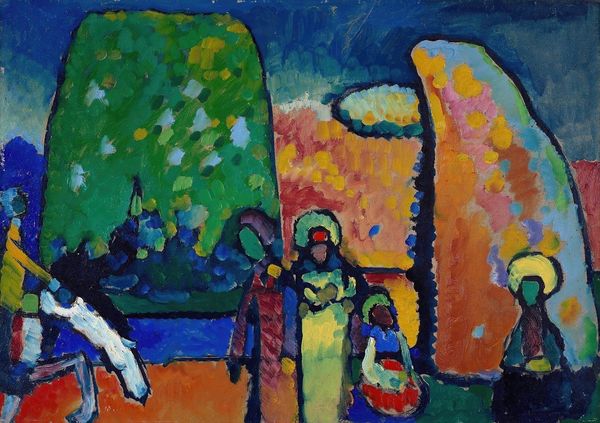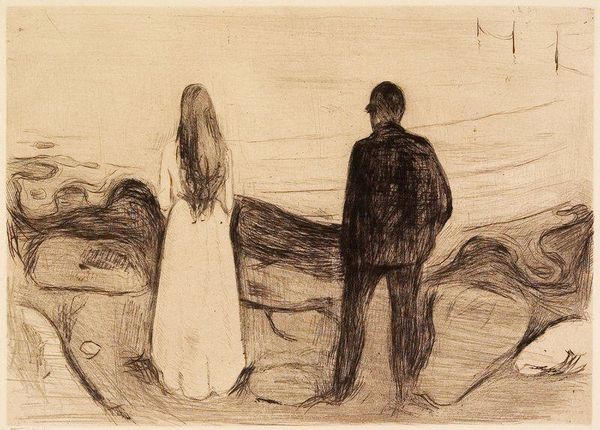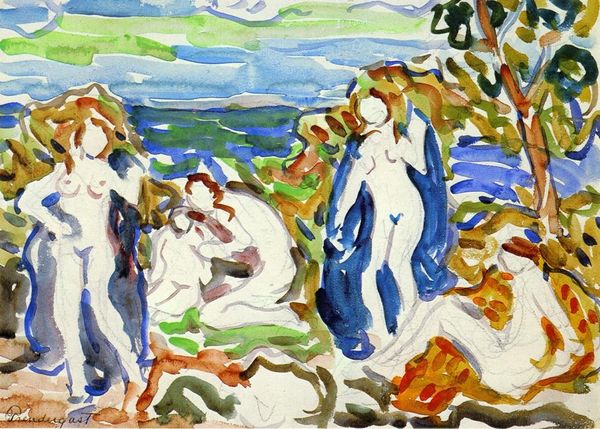
Dimensions: 100 x 130 cm
Copyright: Public domain
Curator: Looking at Edvard Munch’s 1935 painting, "The Lonely Ones," I'm struck by its immediate melancholic atmosphere. Editor: Absolutely. There’s an oppressive weight in the composition, wouldn’t you agree? The figures, though together, are clearly isolated from one another and even the surrounding environment. Curator: It's interesting that you say that, because Munch repeatedly returned to the motif of figures on the shore, exploring themes of isolation and human connection throughout his career. In "The Lonely Ones", notice how their inward focus makes them oblivious to each other. This image, for me, evokes something about the modern individual alienated from communal support structures, which finds root in, say, pre-Christian iconology: images of abandonment. Editor: Indeed. This painting functions as more than just a symbolic portrait; it engages with the historical narrative of shifting social relationships as modern society has formed and calcified. The raw impasto and the stark contrast in coloring only emphasize this fragmentation, wouldn't you say? And beyond, even, those material facts, there’s a clear racialized and gendered component at work here. Curator: True. You read it as such, but Munch frequently manipulated form and color for emotional resonance, building upon symbolist tropes. While a sociohistorical interpretation adds nuance, it can be argued the universal themes of loss and detachment remain core to the piece, speaking of and to conditions far outside its origins in interwar Scandanavia. Look how the landscape almost pushes in on them, mimicking the pressure of societal expectations. Editor: But aren't those very societal expectations products of their time? To look at the solitary woman cloaked in white and *not* see her positioned within a patriarchal structure feels negligent. Art becomes powerful *through* its entanglement within power dynamics. Curator: The enduring strength of an image rests upon polysemy; it speaks in myriad registers across time. While rooted in the specifics of context, artworks, at their best, transcends the limits to reveal continuities of human experience. Editor: Agreed. Understanding those complex dialogues – between individual and society, past and present – is what ultimately allows us to see ourselves reflected in these “lonely ones.”
Comments
No comments
Be the first to comment and join the conversation on the ultimate creative platform.
